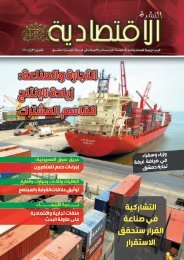SIGAR
2017-01-30qr
2017-01-30qr
Create successful ePaper yourself
Turn your PDF publications into a flip-book with our unique Google optimized e-Paper software.
RECONSTRUCTION UPDATE<br />
that project funds were not well balanced between provinces. Parliament<br />
rejected a draft FY 1395 budget with the same critique. On January 16, 2017,<br />
the parliament passed an AFN 429 billion budget (more than $6.4 billion in<br />
current dollars) on its third attempt with only 57% of lower house members<br />
participating in the vote. Domestic revenues are to pay for 38% of the budget,<br />
with donor assistance covering the rest.<br />
Domestic revenues collected in the first 11 months of FY 1395 rose<br />
32.0% above the same period in the previous year, but still covered only<br />
about 46.4% of total government expenditures, leaving a $2.4 billion fiscal<br />
gap. Recurrent revenue streams like taxation and customs revenues<br />
increased more modestly. Revenue from the sale of government-owned<br />
land and buildings saw the biggest percentage increase compared to the<br />
same period last year, but it is questionable whether revenue inflows from<br />
such finite sources are sustainable. Increased revenue, while positive in<br />
light of Afghanistan’s persistent fiscal gap, had no appreciable benefit for<br />
Afghanistan’s economy.<br />
The World Bank projected Afghanistan’s real (net of inflation) gross<br />
domestic product (GDP), excluding opium, to grow 1.2% in 2016, marginally<br />
higher than 0.8% in 2015. The IMF said current economic growth—which is<br />
not keeping pace with the growth in population—remains far below what is<br />
necessary to increase employment and improve living standards.<br />
Final approval of the U.S. government’s revised counternarcotics strategy<br />
has been postponed until the new U.S. Administration takes office.<br />
The United States has provided $8.5 billion for counternarcotic efforts<br />
in Afghanistan since 2002, but the area under poppy cultivation this year<br />
increased 10% to 201,000 hectares compared to last year’s total.<br />
The United Nations also reported that eradication results in 2016 were<br />
the lowest this decade at 355 hectares—a 91% decrease from 2015. Though<br />
cultivation decreased 7% in Helmand, the country’s main opium poppycultivating<br />
province, it increased significantly in some provinces, such<br />
as Badghis (184%), while Jowzjan Province lost the poppy-free status it<br />
had regained in 2008. Additionally, Afghanistan has a severe and growing<br />
domestic addiction problem, with an estimated 11% of the adult population<br />
using drugs.<br />
Cumulative appropriations for relief and reconstruction in Afghanistan<br />
totaled approximately $117.3 billion, as of December 31, 2016. Of the total<br />
cumulative amount appropriated for Afghanistan reconstruction, $98.8 billion<br />
went to the seven major reconstruction funds featured in the Status of Funds<br />
subsection of this report. Approximately $8.4 billion of this amount remained<br />
available for potential disbursement.<br />
REPORT TO THE UNITED STATES CONGRESS I JANUARY 30, 2017<br />
67







